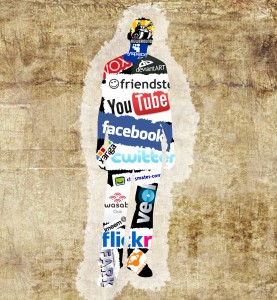I’m currently teaching a section of HIST395, our department’s mandatory research methods course for History majors. We normally offer four or five sections a semester and use a shared syllabus. Over the summer, a colleague proposed that we add a new element: a required WordPress site. In addition to the usual research paper, exams, oral presentation, and other assignments, each student in each of the four sections will create his or her own domain–a place to post papers, a resume, photos, random musings, whatever. I’m familiar with WordPress, but I confess to feeling
ambivalent. On the one hand, I agree with the project’s core goal: to help humanities students develop marketable technology skills in addition to the “traditional” ones, like writing, analyzing, and synthesizing. On the other hand, I still have concerns about student privacy and digital identity, as I described in this earlier post.
So here’s what I’m gonna do: integrate some additional information about the need to manage one’s digital identity. I especially like the approach taken by University of Mary Washington’s Domain of One’s Own Project, so I looked there first. The readings for digital identity were, as to be expected, perfect for my purposes. For now, I am assigning the students in my class to read Tim Chambers’ 2011 series of three essays for Huffington Post, “Who Owns the Digital You?,” part 1, part 2, and part 3.

